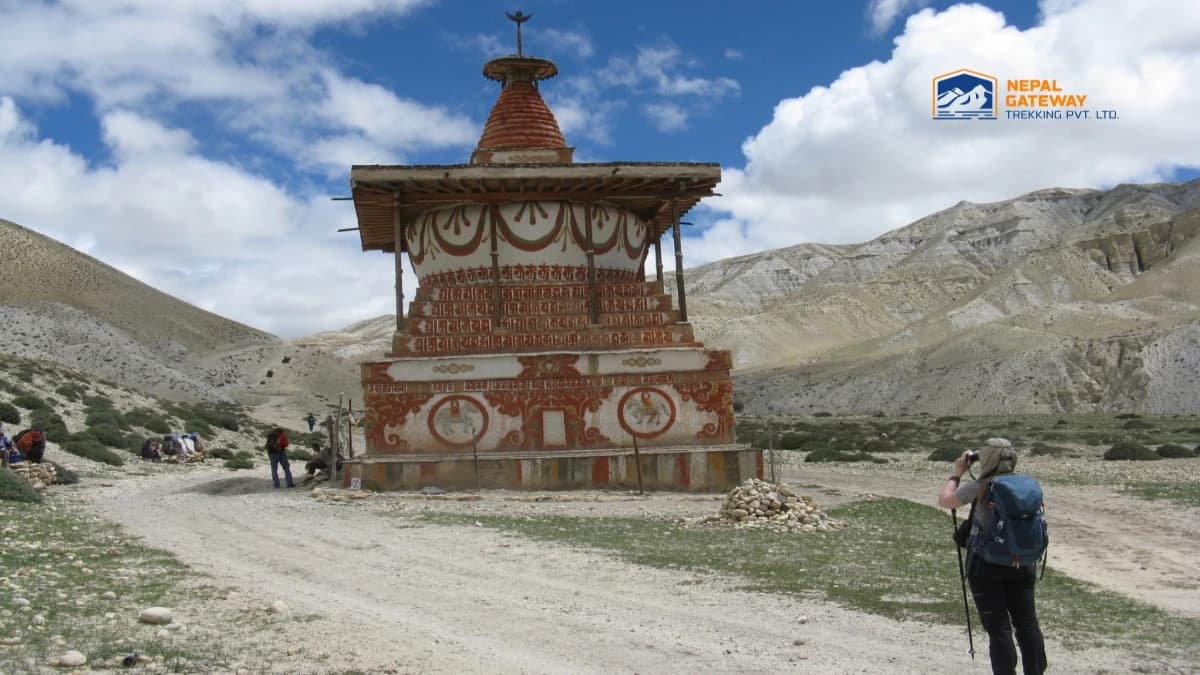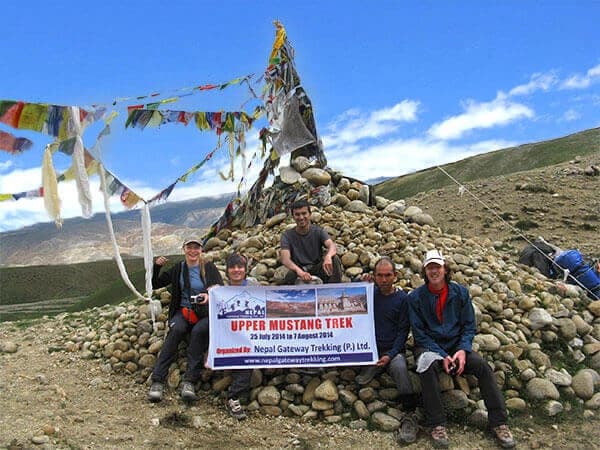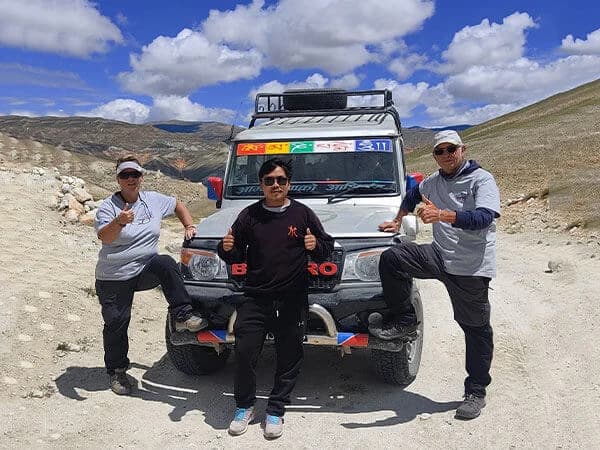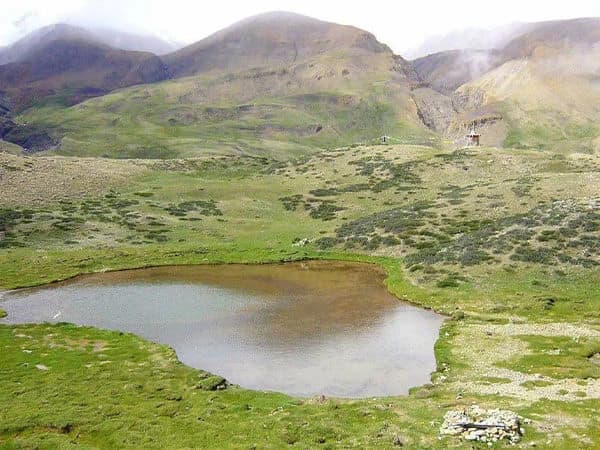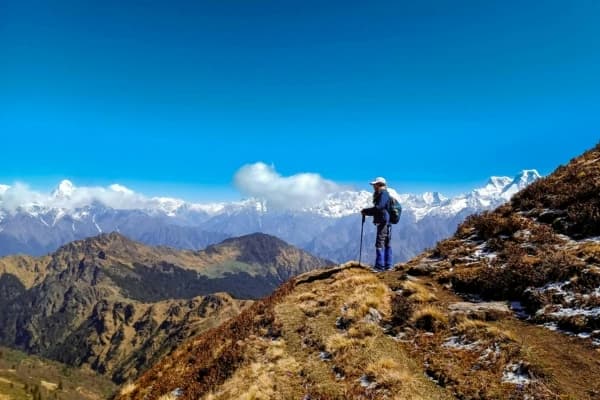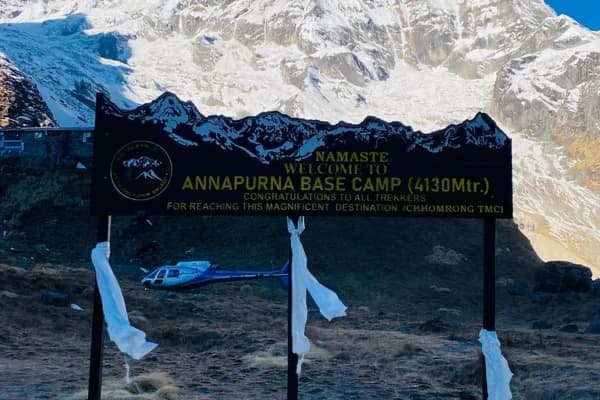Have you ever dreamed of walking through a place untouched by time? The Upper Mustang Trek offers a magical journey through ancient Tibetan culture, desert-like valleys, and mysterious caves.
But wait, isn't it expensive? Is it too remote? What about permits, and what is the best time to go? And if you're just a teen or a first-time trekker, will you survive the challenge?
Don't worry. We've got all the answers packed in this blog. From costs and permits to a day-by-day itinerary, let's dive into everything you need to know about the Upper Mustang Trek.
Why Choose the Upper Mustang Trek?
Many refer to Upper Mustang as the "Last Forbidden Kingdom" of Nepal. Why? Because foreigners were not allowed here until 1992. Now, it's one of the most culturally rich and visually stunning trekking destinations in the Himalayas.
You won't just walk through mountains—you'll pass ancient monasteries, sky caves, and mud-brick villages that still hold secrets of Tibetan Buddhism. If you're craving more than just a hike, this journey feeds your soul.
Best Time to Visit Upper Mustang

Spotted in the rain shadow of the Dhaulagiri and Annapurna peaks, Upper Mustang allows for trekking even during the monsoon season. Here's a quick guide to the best times to visit based on weather, scenery, and crowds.
When is the Best Time?
- Spring (March to May): Ideal for vibrant landscapes, clear skies, and mild temperatures (15°C to 20°C). Perfect for photography and pleasant trekking.
- Autumn (September to November): The most popular season. Expect sunny days, clear skies, and crisp air (10°C to 18°C). Trails are in top condition, and crowds are moderate.
- Monsoon (June to August): A surprisingly good time! The rain-shadow keeps the region dry, offering fewer tourists and peaceful trekking. Conditions are dusty, with mild temperatures.
- Winter (December to February): Harsh cold and snow in higher altitudes. Not ideal unless you're experienced in cold and high-altitude conditions.
Upper Mustang Route Variation
Upper mustang offers three popular trekking variations, each offering something different—from deep cultural exploration and ancient cave monasteries to sacred lakes and off-road comfort. Here's a quick overview:
Upper Mustang Trek with Yara
Upper Mustang Trek with Yara is ideal for trekkers who want to explore the remote village of Yara and the hidden Luri Gompa cave monastery, offering a raw, cultural immersion.
Itinerary: Upper Mustang Trek with Yara
- Day 1: Arrival in Kathmandu
- Day 2: Drive to Pokhara
- Day 3: Fly to Jomsom, trek to Kagbeni
- Day 4: Trek to Chele
- Day 5: Trek to Syangboche
- Day 6: Trek to Ghami
- Day 7: Trek to Charang
- Day 8: Trek to Lo Manthang
- Day 9: Explore Lo Manthang
- Day 10: Trek to Yara
- Day 11: Visit Luri Gompa cave monastery
- Day 12: Trek to Tangge
- Day 13: Trek to Chhusang
- Day 14: Trek to Muktinath
- Day 15: Trek to Jomsom
- Day 16: Fly back to Pokhara
- Day 17: Return to Kathmandu
This extended trek lets you witness spiritual gems and less-traveled trails beyond Lo Manthang.
Upper Mustang Overland Tour
A comfortable jeep adventure through the Mustang region, perfect for travelers with limited time or less interest in long hikes.
Itinerary: Upper Mustang Overland Tour
- Day 1: Arrival in Kathmandu
- Day 2: Permit Making Day
- Day 3: Drive to Pokhara
- Day 4: Drive to Kagbeni via Beni and Jomsom
- Day 5: Drive to Lo Manthang via Ghami and Charang
- Day 6: Explore Lo Manthang and nearby monasteries
- Day 7: Day trip to Chhoser and Jhong cave
- Day 8: Drive to Muktinath
- Day 9: Drive to Pokhara
- Day 10: Return to Kathmandu
A perfect option for those who want Mustang's highlights in a short, less physically demanding journey.
Featured Packages:Upper Mustang Overland Tour
Upper Mustang Damodar Kunda Trek
A sacred and scenic trek combining the Upper Mustang route with a journey to Damodar Kunda—a holy lake for both Hindus and Buddhists.
Itinerary: Upper Mustang Damodar Kunda Trek
- Day 1: Arrival in Kathmandu
- Day 2: Drive to Pokhara
- Day 3: Fly to Jomsom, trek to Kagbeni
- Day 4: Trek to Chele
- Day 5: Trek to Syangboche
- Day 6: Trek to Ghami
- Day 7: Trek to Charang
- Day 8: Trek to Lo Manthang
- Day 9: Explore Lo Manthang
- Day 10: Trek to Yara
- Day 11: Trek to Ghuma Thanti
- Day 12: Trek to Damodar Kunda
- Day 13: Explore Damodar Kunda, trek back to Ghuma Thanti
- Day 14: Trek to Yara
- Day 15: Trek to Tangge
- Day 16: Trek to Chhusang
- Day 17: Trek to Muktinath
- Day 18: Trek to Jomsom
- Day 19: Fly to Pokhara
- Day 20: Return to Kathmandu
This trek is a spiritually enriching adventure for trekkers looking to explore sacred Himalayan landscapes.
Featured Packages: Upper Mustang Damodar Kunda Trek
Upper Mustang Trek Cost: What You Need to Know

The Upper Mustang Trek offers a unique and unforgettable adventure, taking you through the remote and culturally rich region of Upper Mustang in Nepal.
Whether you choose the classic trek with a journey to Damodar Kunda, the more comfortable overland tour, or the rugged Damodar Kunda Trek, each offers an immersive experience of this mystical land, stunning landscapes, ancient monasteries, and Tibetan culture.
Below, we break down the details, costs, and itinerary for each of these exciting options.
Upper Mustang Trek with Yara
Duration: Approximately 16 - 18 Days
Approximate Cost
- Group of 2–4: USD 1,690 per person
- Group of 5–10: USD 1,530 per person
Includes
- Domestic flights
- Permits (Upper Mustang, ACAP) - Nepal Trekking Permit Information
- Hotels in Kathmandu/Pokhara
- Guide, porter, meals during trek
Excludes
- International flights, visa
- Travel insurance
- Personal expenses (drinks, showers, tips)
Upper Mustang Overland Tour
Duration: Approximately 10 - 13 Days
Approximate Cost
- Group of 2–4: USD 1,550 per person
- Group of 5–10: USD 1,400 per person
Includes
- Private 4WD transport
- Permits
- Meals and lodging
- Guide and driver
Excludes
- International flights, visa
- Insurance
- Personal expenses and tips
Upper Mustang Damodar Kunda Trek
Duration: Approximately 17 - 20 Days
Approximate Cost
- Group of 2–4: USD 2,200 per person
- Group of 5–10: USD 2,050 per person
Includes
- Domestic flights
- Special permits
- Tent camping and meals
- Guide, porter, cook
Excludes
- International flights, visa
- Insurance
- Personal costs and tips
Upper Mustang Permit Requirements
Upper Mustang requires special permits due to its restricted status. Trekkers must obtain both a Restricted Area Permit and an Annapurna Conservation Area Permit through authorized agencies.
Two Main Permits
- Restricted Area Permit: Around USD 500 for the first 10 days. Approximately USD 50 for each extra day.
- Annapurna Conservation Area Permit (ACAP): USD 30
Important notes
- You must trek with a registered guide and at least one companion.
- Permits are only issued through licensed trekking agencies.
If you want information about permits, click here.
How to Reach Upper Mustang?

Reaching Upper Mustang may seem like a journey into a remote land—and in many ways, it is—but with the correct route, it's surprisingly manageable. There's no direct route from Kathmandu to Upper Mustang. Visitors can add flights, drives, and trekking to get there easily.
Step 1: Travel to Pokhara by car or airplane
Fly a 25-minute flight from Kathmandu to Pokhara to always start your journey, or take a private vehicle or tourist bus for 6–8 hours. Pokhara, popular for its vistas of the lakes and mountains, serves as the primary gateway to the Mustang region.
Step 2: Fly from Pokhara to Jomsom
Fly from Pokhara on a short 15–20-minute flight to Jomsom, a charming little town embedded in the lower Mustang region. The journey itself offers breathtaking scenery over Annapurna and the Dhaulagiri peaks from well above.
Step 3: Begin Your Trek from Jomsom
Once in Jomsom, your trek to Upper Mustang begins. From here, you’ll pass through ancient villages, barren landscapes, and centuries-old monasteries as you make your way toward the walled city of Lo Manthang, the cultural heart of Upper Mustang.
What to Expect: Terrain, Weather & Experience Level
Upper Mustang offers rugged terrain, dry and windy weather, and a moderate trekking challenge. It's ideal for those with some hiking experience seeking unique landscapes and rich Tibetan culture.
- Terrain: Dry, desert-like landscapes with red cliffs and narrow valleys. Elevation ranges from approximately 2,800 to 4,200 meters.
- Weather: Expect cold mornings, sunny afternoons, and windy evenings.
- Fitness Level: Moderate fitness is enough. Even teens can handle the trail with some preparation.
- Culture: Rich Tibetan Buddhist culture, monasteries, prayer flags, and ancient traditions.
Conclusion
A journey from one of the world's smallest and culturally unique areas, the Upper Mustang Trek is more than just a journey. This walk delivers life-long memories, from its stunning desert-like terrain and ancient caves to lively Tibetan-influenced villages and hospitable residents.
However, you're going solo or with a group, Nepal Gateway Trekking ensures a safe, seamless, and enriching journey. Now that you know about the best time to visit, costs, permits, itinerary, and how to reach Upper Mustang, there's no reason to wait.
Have a question about your next Himalayan adventure? Reach out—we’re here to help!
FAQs
How difficult is the Upper Mustang Trek?
It’s not easy, but it’s not extreme either. I’d call it a solid moderate. The trail has some long days, steep sections, and high altitudes, but nothing too technical. If you’ve done a few hikes before and can handle walking for several hours a day, you’ll be fine.
I’ve seen teenagers and first-timers finish it with no problem—as long as they were reasonably fit and took time to acclimatize properly. Just don’t rush it. Go slow, hydrate, and enjoy the ride.
What’s the best time to visit Upper Mustang?
Most people aim for spring (March to May) or autumn (September to November)—and for good reason. The weather’s stable, the views are clear, and temperatures are comfortable. That said, Upper Mustang is in a rain shadow, so even during Nepal’s monsoon season, it stays pretty dry.
I actually went during monsoon once and loved having the trail mostly to myself. Fewer trekkers, moody skies, and a quiet vibe—it was something special.
How many days does the trek take?
Expect around 17 days, give or take. That includes a couple of days in Kathmandu, the flights to and from the trailhead, and the actual trekking, which is usually about 10–12 days depending on your route and pace. If you’re tight on time, some itineraries can be trimmed down a bit.
But honestly, this is one trek where you don’t want to rush. The landscape changes slowly and beautifully, and the villages deserve more than a passing glance.
What permits do I need?
You’ll need two permits: the Restricted Area Permit (RAP), which costs USD 500 for 10 days, and the Annapurna Conservation Area Permit (ACAP), which is USD 30. Your trekking company will sort these out for you, so you don’t have to deal with the paperwork.
Just bring your passport, a couple of photos, and let them handle the rest.
Is it safe to trek in Upper Mustang?
Yes, it’s a very safe region. The trails are remote but well-trodden, and the local people are warm and welcoming. Of course, like with any trek in Nepal, it’s safer and more enjoyable with a good guide.
I went with Nepal Gateway Trekking, and they were excellent—knew the terrain, handled the logistics, and made sure we were comfortable every step of the way.
Can I do the trek solo?
Nope, not this one. Upper Mustang is a restricted area, which means solo trekking isn’t allowed. You’ll need to be in a group of at least two people and have a registered guide with you. It might sound limiting, but it’s actually a blessing in disguise.
Having a guide means you get more out of the experience—they explain the culture, handle the route, and make things easier if anything unexpected comes up.
What’s included in the trek cost?
Most packages cover just about everything you’ll need: domestic flights, accommodation, meals on the trek, permits, guides, porters, and transportation. What’s not usually included are extras like Wi-Fi, hot showers, snacks, insurance, and tips.
Those costs are small, but they add up, so bring a bit of extra cash just in case.
How do I get to Upper Mustang?
First, you fly from Kathmandu to Pokhara, then hop on a short, scenic flight to Jomsom—a windy little town where the real adventure begins. From there, you hit the trail and slowly make your way deeper into Mustang. The journey itself is part of the fun. Those flights are something you’ll remember.
Are there ATMs or Wi-Fi on the trek?
Once you leave Pokhara, ATMs are practically nonexistent. Bring cash—enough for any extras, snacks, or tips. As for Wi-Fi, you’ll find it in some villages, but it’s usually slow and not always reliable. Honestly, it’s a great excuse to unplug for a while.
I didn’t miss being online. The landscapes and conversations were way more interesting.
Why should I go with Nepal Gateway Trekking?
They’re the kind of company that feels less like a tour operator and more like a trusted local friend. They take care of everything, know the region inside out, and treat you like a human being—not a booking number.
What I appreciated most was their flexibility and how well they looked after our group. If you want a stress-free, meaningful trek with people who genuinely care, you can’t go wrong with them.
